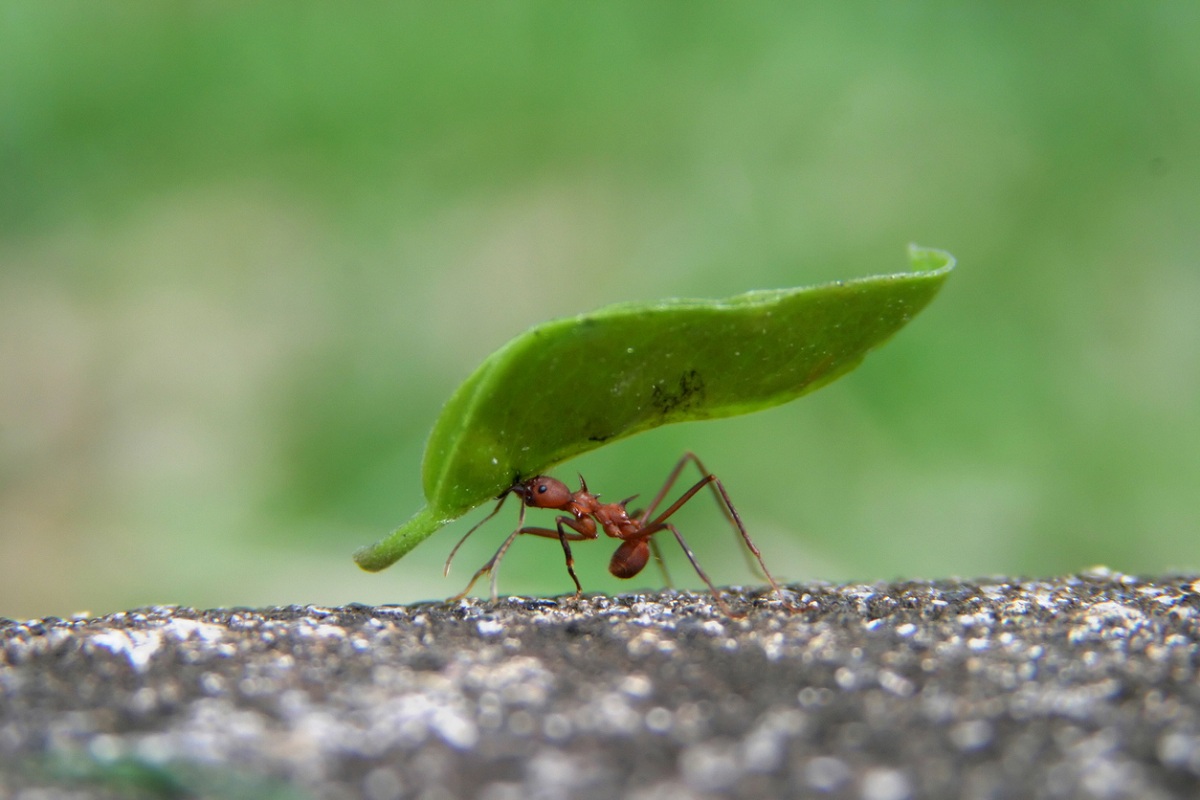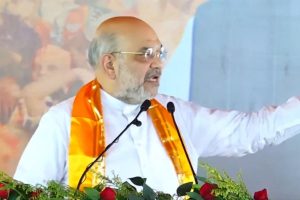The flightless ant is a unique evolutionary adaptation of giving up one faculty to enable another one. The ant belongs to the insect order, Hymenoptera, a word built of the Greek hymen or membrane, and pteron or wing. And indeed, most of the members of the order, bees and wasps, have translucent wings.
Honey bees, some wasps, and ants, which evolved from a line of wasps, are eusocial insects, or insects that collect food at a central place, with a large number of female workers acting in collaboration, for the benefit of the swarm, and the queen and male members.
The ant, however, stands out, in that the female ant has no wings. But then, the female ant has phenomenal strength to lift and carry food or prey over a distance, or to scamper for cover if there is danger. Christian Peeters, Roberto A Keller, Adam Khalife, Georg Fischer, Julian Katzke, Alexander Blanke and Evan P Economo, from Sorbonne, Universities of Lisbon and Cologne and the Okinawa Institute of Science and Technology, Japan, write in the journal, Frontiers in Zoology, a study of how the worker ant is different from the queen and males, who stay in the nest.
Advertisement
They document how the body structure of the worker has evolved, to use the space that is freed by not having wings, to accommodate powerful muscles for other purposes. The differentiating feature of Hymenoptera is the method of reproduction. Among ants, it is the queen that lays eggs, and the eggs may be fertilised or unfertilised.
The fertilised eggs, which have two chromosomes, develop into the female, worker ants. The unfertilised eggs, with a single chromosome, turn into males. It would appear odd that the females yield their interest of propagating themselves to the queen to do all the reproducing.
But it turns out that as females are borne of a union where the mother makes twice the genetic contribution that the father makes, the sisters share three-quarters of the genes, in place of only half that would be carried forward if they mated in the normal way. The way of cooperative reproduction thus seems to mirror the legendary cooperation that ants show in the way they work for the colony and nest.
We see that evolution, which functions not at the level of the workers, but of the queen, has acted not on the queens, but on worker ants to make them more efficient. This showcases how natural selection can bring about genetic modification by affecting the fitness, not of the one that procreates, but of the genetically passive collaborator.
Peeters and his colleagues write that the success of ants as one of the most abundant animal groups, is generally explained as the result of how ants share the load and act in cohesion while foraging and within the nest. “However, the principal innovation of ants relative to their wasp ancestors was the evolution of a new physical form – a wingless worker caste optimised for ground labour,” they say in the paper.
“Ant reproductives (queens and males) need to fly when they are young, but workers are freed from the need to find mates and disperse. Instead, ant workers are famous for their abilities to lift and carry objects, suggesting adaptations for enhanced foraging on six legs,” the paper says. In the body of the winged ants, the queen and drones, the paper says, the thorax, or the portion between the neck and abdomen, bears the wings and the legs, and supports the head and abdomen.
The thorax is thus subject to conflicting forces. In the case of the wingless worker ant, the load of the wings is no longer carried. There is hence a change in the sizes of the back and front of the thorax — the flight muscles are eliminated, and the neck muscles become bulkier. These features have been studied since over a century but what effect elimination of the wings has had on the shape and structure of the ant frame has not been investigated, the paper says.
The current study considered two species of ants, one where the workers are not widely separated from the queens, and likely to represent the ancestral condition, and the other, where there is pronounced difference. Unlike past studies, the current work had a sensitive apparatus and micro-CT scans were carried out using a 3D X-ray microscope.
The results of the study identified five major changes in the worker thorax, involving the skeleton, muscles of the neck, legs and connection to the abdomen. Taken together, these changes “represent the evolution of an enhanced power core for more effective foraging on six legs,” the paper says. “The thorax of a winged insect is essentially a flying engine with powerful wing muscles,” which occupy 41 and 52 per cent of the thorax, in the two species studied, the paper says.
In worker ants, there are no wings. Bony supports for wings can hence fuse into a rigid structure. The thoracic cavity has depressions to connect muscles that move the legs – a feature that is markedly different from what is there in the queen ant. The paper then describes several other areas where the worker ant has evolved for strong and rapid muscle movement on the ground.
“The queens and workers in two distant sub-families reveals that the evolutionary loss of the flying engine typical of insects allowed for a remodelling of the thoracic skeleton and associated muscles to power earthbound activities,” the paper says, “All worker castes in Hymenoptera evolved specialisations for tasks complementary to the queen caste, but the chasm is much less dramatic in social bees and wasps, because the workers need to fly.
Our insights in the adaptations of a thorax rearranged for strength on six legs reveal that ants maximised the merits of having queen and worker castes, allowing for much greater divergence in body size compared to social bees and wasps.”
(The writer can be contacted at response@simplescience.in)
Advertisement











